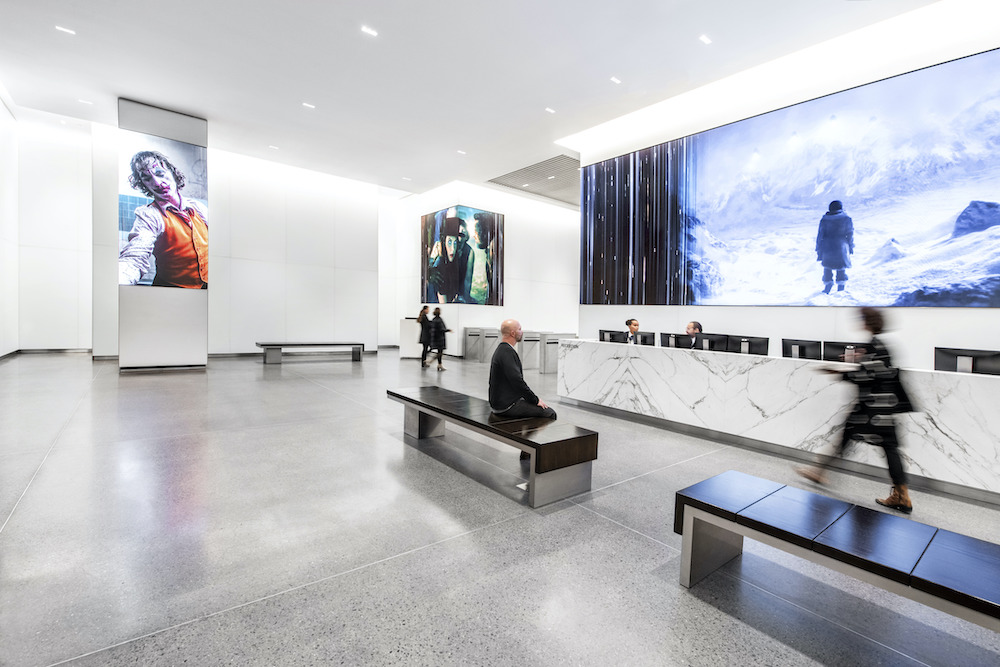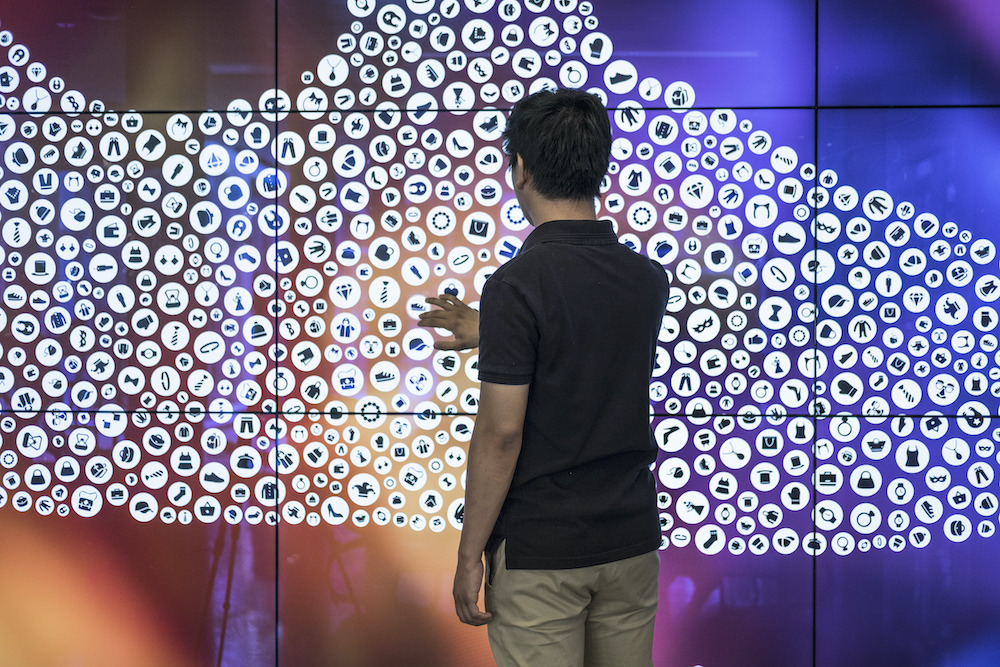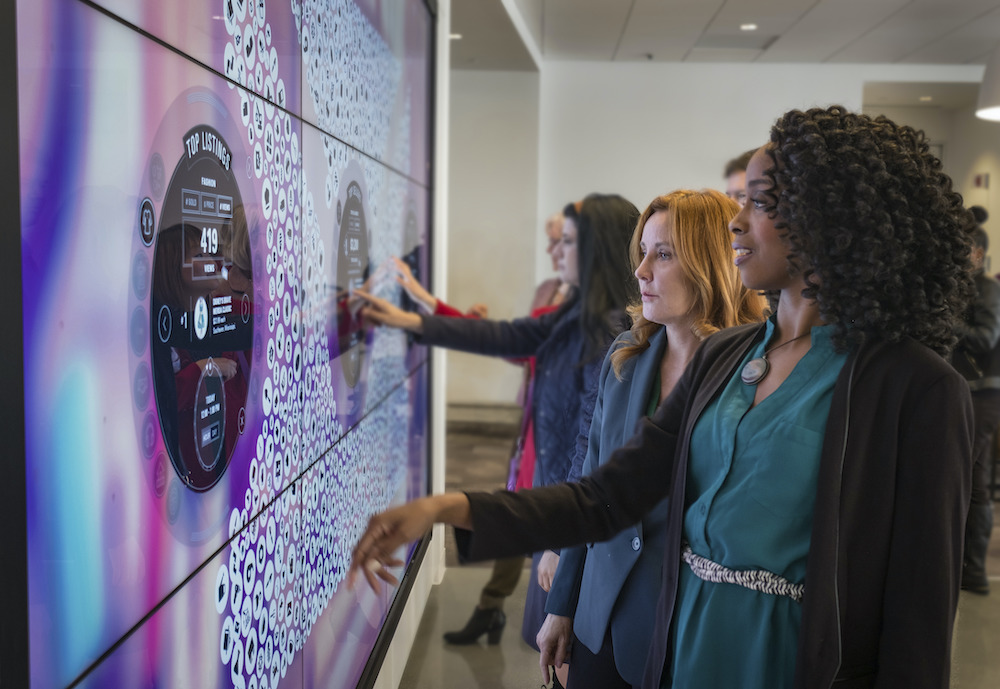Emily Webster of ESI Design shares an experience design masterplan for creating a culture-driven workplace.

There is an interesting paradox happening within the ongoing return-to-office discussion. No one wants to go back to the old ways, and yet everyone is longing for the way things used to be. Fortunately, there is a middle ground worth exploring. Now that we’ve become highly individual in our work habits, we must create a new blend of the personal and professional, especially because many teams will continue to collaborate in a hybrid scenario that negotiates that balance daily.
Enhancing purely transactional office functions with a boost to the company culture that gives our work meaning can make the workplace more compelling as a destination. How can the environment inspire and connect us? Can we heal collective burnout with reinvigorating links to the purpose of our work and its mission and value? And as brand stories rapidly evolve to reflect larger cultural shifts, how can our spaces adapt in real time?
Conducting an assessment of culture in the workplace can feel overwhelming, especially with the numerous variables that affect productivity and well-being. But there is a framework that can help guide the discussion.
Experience Design, a discipline with origins in the museum world, has expanded into other realms, including the workplace. Ideally matched to the goal of making work more personal, Experience Design is a human-centric practice. Through discovery and observation of how people use spaces, and analysis of the information and sensory elements that enhance connection, Experience Design helps to set a cohesive tone and pave the way to better interaction and engagement.
Beyond the pure work spaces, like desks and meeting rooms, the spaces in between should be leveraged as opportunities to create more cultural cohesion.
In contemporary museums, Experience Design creates a strong narrative that is woven throughout the built environment. The story is told across numerous analog and interactive features, often employing dynamic and media-centric attractions that draw crowds and generate engagement while sharing information. Big ideas are translated into inspirational and understandable takeaways, while evocative themes from the institutional mission foster new connections among visitors.
Similar principles of engaging audiences can be applied to how we attract people back to the workplace. Creating an Experience Design strategy can help to determine how a work environment looks and feels based on the ways team members flow through a space, connecting with other people and information along the way. Beyond the pure work spaces, like desks and meeting rooms, the spaces in between should be leveraged as opportunities to create more cultural cohesion. This way, the professional world becomes more personal through storytelling that incorporates the unique cultural and personal elements of an organization. And just like in museums, the technology layer becomes a tool for expression, connection and excitement.
So how can this help to reimagine the office? When individuals feel like they’re part of the whole company story, and that story changes and grows on a regular basis, the workplace can become a source of inspiration. Here is a strategic guide to create an Experience Design masterplan that reinvigorates the built environment with dynamic, culture-driven content that grows and changes in response to the people, history and mission of an organization.

Listen to the Cultural Conversation
Look closely at any workplace and you’ll find signs of the unique company culture that connects coworkers. Inside jokes, personalities, anecdotes, gripes and excitement are everywhere. Consider the creative ways that meeting rooms are named, the notes left on whiteboards, or the unspoken tradition of changing the background image on a collaboration screen to leave a hint of which department was previously in the room.
These ephemeral and humorous qualities of corporate life don’t always translate in a Zoom meeting or even through the best gifs on a Slack channel. What seem like incidental quirks of communication actually represent the ever-changing narrative of a workplace, the conversation that a team has with its environment and the world beyond the building.
With an Experience Design strategy, the workplace can feel like a vital contributor to that conversation.
With an Experience Design strategy, the workplace can feel like a vital contributor to that conversation. It’s the social architecture that complements the physical architecture, a blend of interaction, media and communications that are tied to the physicality of a space. Its components can include artifacts, rotating exhibits, art programs and experience centers, as well as a variety of digital media elements and communication tools used throughout a space. Visual displays, lighting elements and audio features provide flexible outputs that can change a space’s story instantly, a remodeling effort that won’t involve any drywall dust. If done well, these elements can be designed with minimal upkeep.
The dynamic technology of Experience Design has the ability to be formal or informal, portray team-building content or rapidly transform into client presentation mode. And most importantly, it allows the space to feel current, reflecting what’s happening in business today, with a vibrant tether to the outside world.

Activate Human Factors in Workplace Design
An Experience Design strategy is a phased, iterative thinking process that anticipates inevitable change. Instead of being rendered suddenly irrelevant by a new need, message or emotional moment that must be met, there is a plan in place to learn from what’s resonating and evolve the story accordingly. Your space can change with you.
Indeed, one of the first steps in creating an Experience Design masterplan is to think about change. What aspects of office life do you want to renew? Which pieces are more permanent? What needs to be adaptable? What ideas, connective elements or motivations are you trying to pull in? With these notions in mind, you can create a plan that allows for influence and movement where it’s possible, bringing a workplace to life as it acknowledges the people, ideas and productivity within it.
Your space can change with you.
Next, think about how the dynamic elements of an Experience Design, such as the video content, lighting, sound, narration, interactives and maybe even rotating exhibits featuring artifacts can relate to the permanent architecture of a space. How might different areas be activated to tell a new story?
Then, consider the pace of change. What is the rhythm of communication within the organization? Do you want a constant influx from the ever-changing world outside? Are there pieces of the story that can be more historical in nature, reflecting the hows and whys of the company mission?
The more an environment responds and grows in response to the presence of the people within it, the more likely team members will be drawn in and their work will feel relevant. They might plan to visit the office more often to see what’s new and ideally gain some inspiration, especially if their presence leaves an impression on the experience. Tapping into data streams can produce beautiful visualizations that tell stories about the connections between people and products, providing people in the workplace and those working remotely a sense of acknowledgement and a feeling of belonging.

Engage Stakeholders for Success
Several aspects of a company and the physical space of the office will be involved in an experiential masterplan.. To deliver the intended result, it’s important to determine the audience for each component of the strategy and engage stakeholders who are connected with its purpose.
If a media wall is intended to attract talent or dazzle visitors, it will need content direction and branding elements. Dedicated spaces such as experience centers might need input from brand, marketing, sales and product teams to make sure the full story is told. For multi-purpose spaces, the use cases may be internal and external facing, and here too there will likely be a number of contributing opinions on how technology enhances the experience.And beyond the office itself, there are also stakeholders from the commercial real estate and developer worlds who are keen to make their property unique.
To ensure a long term strategy, seek out cross-disciplinary stakeholders that can speak to the different considerations and perspectives of the built environment, digital layers, cultural components and architectural considerations. Together, they can address how the physical attributes of a space meld with the social and cultural elements within the Experience Design framework. Look for team members with a vision who will stay through the project, reminding contributors of the initial aspirations and purpose, starting with visioning and concepting through to operation and usage.
A company should never stand still, so why should your space? It must evolve to stay relevant.
Then, don’t forget to invite the teams who will ensure the space is visited and updated, maintaining the Experience Design plan. The results will be more effective if team members feel like they can participate in the creation of rotating content or responsive digital artworks. Once a space is built, how will people know it’s there? How can they use it and contribute to it so that the space reflects their presence and makes a more impactful and inspirational workplace? What is the invitation to participate?
A visionary stakeholder team who want and encourage evolution and growth within the organization will ensure that the workplace is future facing, and not bogged down by “standards” that aren’t inspiring. Experience Design activations can help that message of innovation resonate in real time. These elements are not decorative, they are a living presence that ensures that your space is equipped with a platform that allows your brand to change over time and with new contributors and input. Prepare for change, and look for champions who are ready to experiment and make improvements along the way. A company should never stand still, so why should your space? It must evolve to stay relevant.
Calibrating the precise balance of meaning and momentum will depend on factors that are different for every organization. And there will be additional twists to the way a particular brand story invigorates a workforce or tells dynamic stories to visitors and potential new talent. Just as with the evolution of any culture, the process is organic. It grows from a blend of daily interactions and major milestones. The next spark of inspiration might arise from anywhere, so be sure to leave room for that spontaneity as you envision the experience you want to create in the workplace. Experience Design equips you with a mechanism within the built environment that plans and designs for change so that as your brand and workplace inevitably evolves, your space can, too.


There are so many great points to consider here. The work place is evolving. The only way to grow along with it is to make the appropriate changes.